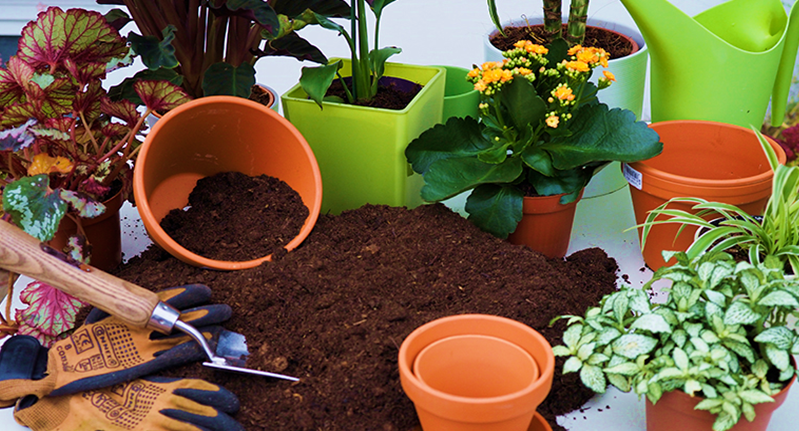Container Gardening
Good Soil Structure for Container Plants
Soil biology and the benefits of good soil structure for container plants is a rapidly expanding area of research and debate. One of the biggest benefits of soil biology is that it is a completely self-maintaining process. The benefit of organic material in the soil is two fold really. It gives a slow release of essential nutrients to the plants through soil content, and it also provides an ideal environment for microorganisms that build stronger soil structure as they decay.
Role of Soil Biology in Knowing Good Soil Structure
To better appreciate these benefits, let’s take a closer look at what is actually good soil structure. Soil biology helps explain what all this is about and how it relates to your garden’s needs. Soil biology is the study of soils and the ways in which they are built and maintained. In simple terms, good soil structure is the result of what is known as an organic soil complex where there is an optimal mix of mineral content and bacterial activity.
Benefits of Adding Organic Matter to Soil
Soil biology has helped us to understand the benefits of adding organic matter to the soil-less mix we use to develop our gardens and greenhouses. By developing and understanding the relationship between plants, soil and the microbes that exist within them we have been able to develop effective plant nutrition. This is particularly important in a dry and windy climate, where the benefits of organic matter on plants is especially pronounced. It is no wonder then that the interest in improving the quality of garden soil is increasing at a rapid pace with both local and international governments devoting increasing amounts of funding to the development of new and more effective commercial fertilizers.
Improvement in Nutritional Value
One of the key benefits of improving the condition of your garden soil is that of improving the nutritional value of your plants. This has a direct impact on the cost of producing food as the mix that is used to produce the finished product has a greater proportion of nutrients in it, which translates into more growth and a higher quality of fruit and vegetables. Adding mycorrhizae fungi to the mix however has other benefits too. It has been shown to reduce plant losses caused by pests and fungi by enhancing the immune system of the plants and making them better equipped to deal with external threats.
Adding Good Soil Structure Organisms in Plants
When plants do not get enough moisture or if there is an excess of nitrogen and potassium in the soil they become sluggish and ill. Adding good soil structure organisms such as the Mycorrhiza species triggers the natural processes that help plants recover from these conditions. This results in better pest control, improved root growth and an overall increase in yield.
Effect of Bad Soil Condition
Soil that is not in a good condition can also be detrimental to the health of the plants. For example, when weeds take over an area of the land and choke the plant roots this can cause the plant to wilt. Adding the Mycorrhiza species in the soil will make it easier for the plant roots to get the nitrogen and nutrients they need. This leads to a healthier plant that will be able to tolerate extreme weather conditions and survive.
Adding Mycorrhizae Fungi In Plants
Adding mycorrhizae fungi to the soil also encourages plant growth and encourages development of the food chain. By increasing the number of plant roots that can obtain food, this means that there will be more insects for the garden to eat. Mycorrhizae fungi are known to inhibit the growth of some pest and disease causing organisms so this also leads to a reduction in the amount of chemicals used in growing plants.
Soil-less Mix of Decomposed Granite and Compost
A soil-less mix of compost and decomposed granite can provide a very rich source of nutrients that can be readily absorbed by the plants. This is because decomposed granite is rich in iron and magnesium, which are two essential nutrients for plant growth. This allows plants to develop quickly and flower before the next frost falls. This type of fertilization mixes well with most lawn grasses and many landscaping grasses and flowers. By making sure the soil mixture is thoroughly moistened with water from above and below ground you are ensuring that your soil-less fertilizer will work properly.

